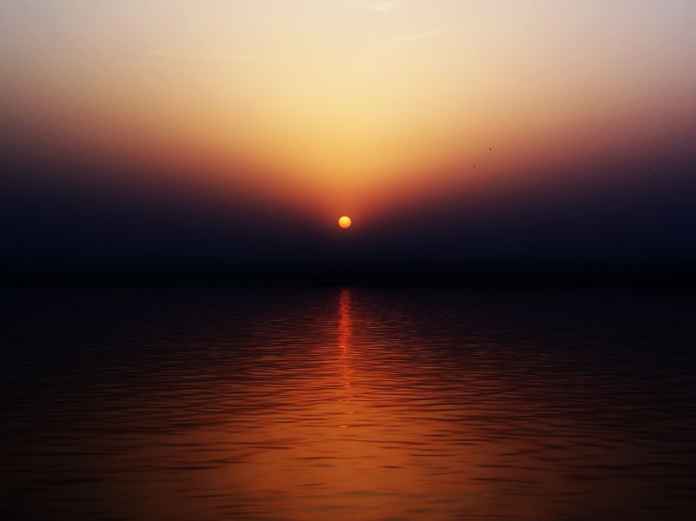An English author Mark Twain, who was enthralled by the legend and sanctity of Varanasi, once wrote: “Varanasi is older than history, older than tradition, older even than legend and looks twice as old as all of them put together”. Varanasi is one of the oldest living cities of the world. It is the microcosm of Hinduism, a city of traditional classical culture, glorified by myth and legend and sanctified by religion. Varanasi gives you a great and moreover a holy & pure experience of travelling. The rays of the dawn shimmering across the Ganges, the high-banks, the temples and shrines along the banks bathed in a golden hue soul stirring hymns and mantras along with the fragrance of incense filling the air and the refreshing dip in the holy waters gently splashing at the ghats gives oneself an immense pleasure of experiencing the ultimate heaven on earth.
Attractions of Varanasi
The name Varanasi has its origin possibly from the names of the two rivers Varuna and Assi, for the old city lies in the north shores of the Ganges bounded by its two tributaries, the Varuna and the Assi, with the Ganges being to its south. Varanasi is a noted centre for Banarasi silk weaving and brassware. Lamp shades and masks of Hindu and Buddhist deities. A number of museums are also there in Varanasi such as Jantar Mantar, Archaeological Museum, Bharat Kala Bhavan, Ramnagar Fort.
There are very few places in India which are as colourful, charismatic or spiritual as the bathing ghats lining the Ganges in Varanasi.
Bath
To take a dip in the sacred waters of the Ganges, over 60,000 people come down to the water’s edge every day. Although medically, bathing in water in which a corpse rests risks infection with numerous blood borne diseases (notably hepatitis) and many infections but once you are in it you’ll find it’s not nearly as bad as you expect thinking about the dozens of sewage pipes and sunken corpses in the waters around you.
Boating in Ganges
Especially at the sunrise and sunset it is really beautiful. The most popular sunset ride is to start at Dasaswamedh Ghat and head up to Manikarnika Ghat to see the cremations in progress, and then return to Dasaswamedh and watch the evening aarti from the boat. Sunrise is another magical time for a ride, when the ghats are filled with Hindus bathing and starting their day – one of the most famous sights in India. The ‘foreign tourist’ rate for a boat ride is Rs300! Though the price limit set by the state government in 1998 is still enforced today that sets a price range from Rs 50 to a maximum of Rs 125.
Walk
Wonder how a walk can be an attraction in the city ? A simple walk in Varanasi can explore its real beauty and deepness. It gives one the immense pleasure embracing the nature’s beauty- the alleyways, the sounds, sight and smell of fresh air, marigold flowers and the offerings of the bhakts are just unbelievable! P.S – You would not want to miss your camera along or would regret it for rest of your life.
Varanasi – The blend of religions
If you in Varanasi then the sounds of temple bells and the saints humming Mantras will be on loop. Varanasi is one of the holiest cities and targets of pilgrimage for Hindus. Hindus believe that bathing in the Ganges remits sins and that dying in Kashi ensures release of a person’s soul from the cycle of its transmigrations. But Varanasi is not only a sacred pilgrimage places of Hindus. The Muslims are also a substantial part of the city’s population. Islam came to Benares in 12th century during the rule of Delhi Sultanate; and established during the Mughal Period. Weaving in Varanasi of the famous Baranasi sarees is a Muslim domain. Varanasi is one of the holiest places in Buddhism too, being one of the four pilgrimage sites said to have been designated by Gautama Buddha himself. The Dhamek Stupa where Buddha gave his first sermon and thereby founded Buddhism.
Ghats
A Ghat is a series of steps leading down to the river. Varanasi has nearly 100 Ghats which were built under Maratha control. Hindus consider it auspicious to die in Varanasi, so some Ghats are known as burning Ghats, where bodies are cremated (in full view) before their ashes are placed in the Ganges.
Temples
You can find a small or large Mandir or Temple at every corner of Varanasi. Some of the famous temples in Varanasi are:
- Vishwanath Temple
- Kaal Bhairav Temple
- Nepali Hindu Temple
- Man Mandir Observatory
- Alamagir Mosque
- Tulsi Manas Temple
How to reach there ?
Airlines
Babatpur Airport is the common name of Lal Bahadur Shastri Airport is at a distance of 21 km from Varanasi Cant Station. Indian carriers are
- Air India
- Jet Airways
- Kingfisher Airlines
- Spicejet
And international carriers are
- Air India
- Mihin Lanka
- Thai Airways International
- Naaz Airlines
Schedule of flights from Delhi
| Departure(Delhi) | Airlines | Days | Arrival(Varanasi) | Flight Num |
| 10:05 | Indian | Daily | 11:20 | IC806 |
| 10:40 | Jet air | Daily | 11:50 | 9W723 |
| 11:45 | Indian | Tue/Thu/Sat | 13:00 | IC451 |
| 13:05 | Kingfisher | Daily | 14:15 | IT621 |
| 14:30 | Spicejet | Daily | 15:45 | SG114 |
| 15:25 | Air Sahara | Daily | 16:45 | S2171 |
Roads
Varanasi was connected by a road starting from Taxila and ending at Pataliputra in ancient times. Extending further to Delhi and Agra the G.T. Road is known as NH 2 between Kolkata and Kanpur. The longest National Highway in India NH 7 connects Varanasi with the cities of Jabalpur, Nagpur, Hyderabad, Bangalore, Salem, Madurai and Kanyakumari.
GT road originating from Kolkata up to Delhi and further up to Lahore (in Pakistan) passes via Varanasi it connects Varanasi to Allahabad, Kanpur, Aligarh cities.
Buses
Local buses from main bus station near the train station are available almost every hour in the morning and one in the evening (to Gorakhpur 5-6 hrs).
State buses
Lucknow -8hrs
Kanpur -9hrs
Allahabad -3hrs
Trains
Commonly known as Varanasi Cantt Railway Station the Varanasi junction. Records a rush of more than 1.5 lakh passengers and more than 230 trains passing through here on a daily basis it is one of the busiest railway stations in India
8 km from the city limit, Mughal Sarai Junction of East Central Railway is another major railway station. Two most important railway lines meet at Mughal Sarai :
Main Line (Delhi-Allahabad-Patna-Howrah)
Grand Cord (Delhi-Moradabad-Lucknow-Varanasi-Gaya-Howrah).
Trains to reach Varanasi:
| Train No. | Trains | Board at | Alight at |
| 2424 | Rajdhani Express | New Delhi | Mughal Sarai Junction |
| 2436 | Rajdhani Express | New Delhi, Lucknow | Varanasi Junction |
| 2560 | Shivganga Express | New Delhi | Varanasi Junction |
| 2165 | Lokmanya Tilak (T) – Varanasi Express | Lokmanya Tilak Terminus (Mumbai) | Varanasi Junction |
| 2336 | Lokmanya Tilak (T) – Bhagalpur Express | Lokmanya Tilak Terminus (Mumbai) | Mughal Sarai Junction |
| 2333 | Vibhuti Express | Howrah (Kolkata) | Mughal Sarai Junction, Varanasi Junction |
| 2307 | Howrah-Jodhpur Express | Howrah (Kolkata) | Mughal Sarai Junction |
| 2669 | Ganga Kaveri Express | Chennai Central | Varanasi Junction |
| 2295 | Sangamitra Express | Bangalore City, Chennai Central | Mughal Sarai Junction |
| 7091 | Secunderabad-Patna Express | Secunderabad (Hyderabad) | Mughal Sarai Junction, Varanasi Junction |
| 4854 | Marudhar Express | Jaipur, Agra Fort | Varanasi Junction |
| 4864 | Marudhar Express | Jaipur, Agra Fort | Varanasi Junction |
Local Transport
Auto rickshaws and cycle rickshaws are the most widely available public transport within old city. In outer regions of the city, city-buses are common. Taxi is also available. Prepaid Auto cum Taxi Booth is there at Cant Railway Station and Babatpur Airport. Small boats and small steamers are available for tourists to the Ganges. Recently, high tech city buses are introduced in the city under JNNURM scheme.












